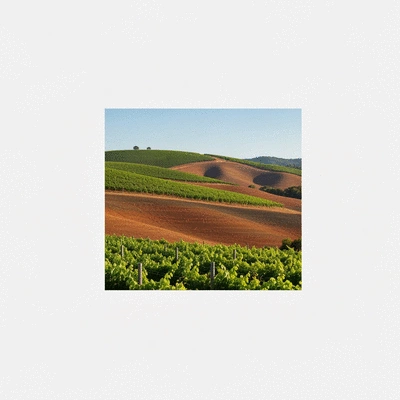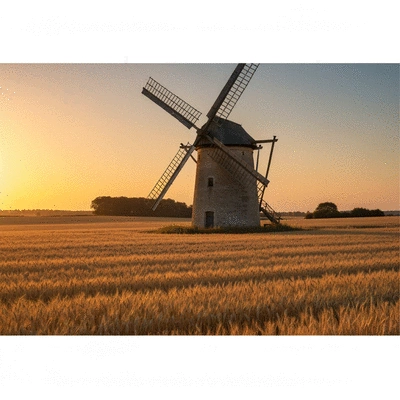Choosing the Right Australian Red Wine
By Clara Hastings / Nov 02
The journey through Australia's red wine landscape is as rich and varied as the wines themselves. Have you ever considered how the nuances of terroir and climate impact the flavors in your glass? Understanding these elements not only enhances your appreciation but also connects you more deeply to the land and the craft of winemaking.
Understanding how environmental factors shape Australian red wines, from soil composition to climate, reveals the unique character of each region.
As a passionate wine enthusiast, I often find myself captivated by the diverse landscape of Australian red wines. From the lush valleys to the rugged hills, the flavors and experiences are as varied as the regions themselves. Understanding this landscape is key to appreciating the richness and complexity of our red wines, and it all starts with terroir. To deepen your understanding of Australian wines, consider exploring the basics of Australian red wine.
Terroir is a French term that encompasses the unique environmental factors that affect wine production, including soil type, climate, and grape variety. In Australia, the significance of terroir cannot be overstated; it shapes the flavor profiles and character of our beloved red wines. It’s a journey through the land that informs every sip and enhances our appreciation of this wonderful beverage!
When we talk about terroir, we’re diving deep into the essence of what makes Australian wines special. Each vineyard reflects its own unique characteristics, influenced by local conditions. For example, the rich soils of the Barossa Valley are famous for producing bold Shiraz, while the cool climates of the Adelaide Hills favor delicate Pinot Noir.
These factors work together to create a wine that is not only a product of its grape variety but also a true reflection of its environment. As you explore various Australian reds, take a moment to think about the terroir behind each wine—it's a fascinating aspect that adds layers to your tasting experience!
Climate plays a crucial role in defining the flavor profiles of Australian red wines. Our country boasts a wide range of climates, from the warm and sunny regions like the Barossa Valley to the cooler areas of the Yarra Valley. Each climate contributes its own unique characteristics to the wines produced there.
By understanding how climate impacts flavors, we can make informed choices about which wines to pair with our meals or enjoy on their own. It’s a chance to connect with the land and the nuances of what we drink, enhancing our overall appreciation for Australian red wines! If you're keen to learn more, check out our beginners guide to red wine.
Now that we’ve covered the foundational elements of Australia’s red wine landscape, let’s dive into the regional highlights! Each area offers its unique terroir and climate, producing a diverse array of outstanding varietals. Exploring these regions is an adventure for the senses!
Australia is home to over 60 different grape varieties, but did you know that Shiraz accounts for nearly 30% of the country's total red wine production? Its popularity stems from its versatility and the ability to express unique characteristics based on the region it's grown in. Next time you pour a glass of Shiraz, think about the specific terroir that shaped its flavor profile!
Terroir refers to the unique environmental factors—such as soil type, climate, and geography—that influence the characteristics and flavor profiles of wines produced in a specific region. It's what makes wines from different regions distinct.
Climate significantly affects grape development. Warm climates tend to produce rich, full-bodied wines with ripe fruit flavors (e.g., Barossa Shiraz), while cool climates yield elegant wines with higher acidity and subtlety (e.g., Adelaide Hills Pinot Noir). Moderate climates offer a balance of fruit and acidity.
The Barossa Valley is famous for bold Shiraz, Adelaide Hills for delicate Pinot Noir, and Margaret River for harmonious wines balancing fruit and acidity. Each region's unique terroir contributes to its signature style.
Sustainable practices include organic farming (avoiding synthetic chemicals), biodynamic techniques (a holistic approach to viticulture), and water conservation efforts (efficient irrigation). These practices aim to protect the environment while producing high-quality wine.
Understanding these elements deepens your appreciation for wine by connecting you to the land and the craft of winemaking. It helps you make informed choices about wines, understand their unique characteristics, and enhance your overall tasting experience.
As we wrap up our journey through the vibrant world of Australian red wine, it’s essential to recognize just how terroir and climate shape these exquisite varietals. Each region contributes its unique character, influenced by everything from soil composition to prevailing weather patterns. Understanding these nuances is key for any enthusiast looking to deepen their appreciation of wine.
Here are some key takeaways to remember:
By grasping these elements, you’ll be better equipped to select wines that not only please your palate but also resonate with the rich history of their origins. This knowledge enriches your wine experience, making each sip a celebration of Australian craftsmanship!
Sustainability is increasingly vital in the wine industry, and it’s a topic close to my heart at Red Wine Hub. As wine lovers, we have the power to influence how wines are produced by supporting eco-friendly practices. Many Australian winemakers are embracing sustainable methods that prioritize environmental health without sacrificing quality. For more information on sustainable wine choices, explore articles on choosing eco-friendly red wines.
Here are some sustainable practices to look for in your wine choices:
Choosing wines from sustainable producers not only enhances your drinking experience but also supports a healthier planet. Next time you’re browsing the shelves, consider looking for eco-labels. Every bottle you choose can make a difference!
Here is a quick recap of the important points discussed in the article:



 Choosing the Right Australian Red Wine
Choosing the perfect Australian red wine can significantly enhance your dining experience. Are you r
Choosing the Right Australian Red Wine
Choosing the perfect Australian red wine can significantly enhance your dining experience. Are you r
 Australia's Red Wine Regions Explored
The journey through Australia's red wine landscape is as rich and varied as the wines themselves. Ha
Australia's Red Wine Regions Explored
The journey through Australia's red wine landscape is as rich and varied as the wines themselves. Ha
 Sustainable Red Wine and the Earth
What if your wine choices could help save the planet? Sustainable red wine production not only ensur
Sustainable Red Wine and the Earth
What if your wine choices could help save the planet? Sustainable red wine production not only ensur